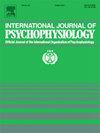Effect of 24-h and 36-h acute total sleep deprivation on human attention: An activation likelihood estimation meta-analysis
IF 2.6
3区 心理学
Q3 NEUROSCIENCES
引用次数: 0
Abstract
Background
Currently, there is no consensus on the effect of different durations of acute total sleep deprivation (ATSD) on human attention. This activation likelihood estimation (ALE) meta-analysis aimed to compare the different patterns of functional magnetic resonance imaging (fMRI activation) between 24-h and 36-h ATSD across attention tasks.
Methods
We used Ginger ALE 2.3.6 software to conduct coordinate-based ALE meta-analysis. The literature related to sleep deprivation, attention, and neuroimaging was searched in four databases: CNKI, PubMed, Web of Science, and PsycINFO from November 1980 to March 2023.
Results
We included 16 fMRI-related articles, with 383 participants and 95 foci. The findings revealed that 24-h ATSD and 36-h ATSD may impair different brain areas. After 24-h ATSD, there was significantly reduced brain activation in the parietal-occipital attention lobes and the salience network, including the bilateral superior parietal lobule, right inferior occipital gyrus, and left insula. Increased activation was observed in the sub-lobar regions, including the bilateral thalamus. After 36-h ATSD, there was significantly reduced activation in the frontoparietal attention network, including the left middle frontal gyrus and the right inferior frontal gyrus.
Conclusions
This ALE meta-analysis revealed that prolonged ATSD leads to more severe temporary brain damage and a cumulative decrease in the external stimuli captured by humans. This primarily affects the frontal-parietal-occipital attention network and the salience network. Thalamic activation may compensate for dysfunction in the parietal-occipital attention network after 24-h ATSD. Sleep deprivation duration plays a crucial role in the extent of attention impairment.
24小时和36小时急性全睡眠剥夺对人注意力的影响:激活似然估计荟萃分析。
背景:目前,关于急性完全睡眠剥夺(ATSD)不同持续时间对人注意力的影响尚未达成共识。这项激活似然估计(ALE)荟萃分析旨在比较24小时和36小时ATSD在注意任务中的不同功能磁共振成像(fMRI激活)模式。方法:采用Ginger ALE 2.3.6软件进行坐标ALE meta分析。从1980年11月到2023年3月,在四个数据库中检索了与睡眠剥夺、注意力和神经影像学相关的文献:CNKI、PubMed、Web of Science和PsycINFO。结果:我们纳入了16篇与fmri相关的文章,383名参与者和95个焦点。研究结果显示,24小时和36小时的ATSD可能损害不同的大脑区域。ATSD 24小时后,顶叶-枕叶注意叶和突出网络(包括双侧顶叶上小叶、右侧枕下回和左侧脑岛)的脑激活显著降低。在叶下区域,包括双侧丘脑,观察到激活增加。ATSD 36小时后,额顶叶注意网络(包括左侧额中回和右侧额下回)的激活显著减少。结论:这项ALE荟萃分析显示,延长的ATSD会导致更严重的暂时性脑损伤和人类捕获的外部刺激的累积减少。这主要影响额-顶叶-枕部注意网络和显著性网络。丘脑激活可能补偿了24小时ATSD后顶枕注意网络的功能障碍。睡眠剥夺的持续时间对注意力障碍的程度起着至关重要的作用。
本文章由计算机程序翻译,如有差异,请以英文原文为准。
求助全文
约1分钟内获得全文
求助全文
来源期刊
CiteScore
5.40
自引率
10.00%
发文量
177
审稿时长
3-8 weeks
期刊介绍:
The International Journal of Psychophysiology is the official journal of the International Organization of Psychophysiology, and provides a respected forum for the publication of high quality original contributions on all aspects of psychophysiology. The journal is interdisciplinary and aims to integrate the neurosciences and behavioral sciences. Empirical, theoretical, and review articles are encouraged in the following areas:
• Cerebral psychophysiology: including functional brain mapping and neuroimaging with Event-Related Potentials (ERPs), Positron Emission Tomography (PET), Functional Magnetic Resonance Imaging (fMRI) and Electroencephalographic studies.
• Autonomic functions: including bilateral electrodermal activity, pupillometry and blood volume changes.
• Cardiovascular Psychophysiology:including studies of blood pressure, cardiac functioning and respiration.
• Somatic psychophysiology: including muscle activity, eye movements and eye blinks.

 求助内容:
求助内容: 应助结果提醒方式:
应助结果提醒方式:


